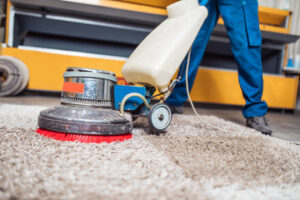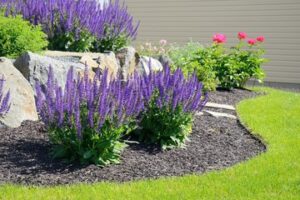Regular Carpet Cleaning El Dorado Hills is a good way to reduce the risk of stains and dirt build-up. Make sure that you use the right DIY cleaner formula for your carpet type and fibers to avoid damage and fading.
Always apply these homemade cleaning solutions to a white cloth rather than pouring them directly onto your carpeting to control the amount of moisture.

Preparation
Keeping your home’s carpets clean is important to prevent health problems, including dust mites, allergies, and other respiratory issues. But even with regular vacuuming and spot treatments, sometimes your carpets need more help than just a good scrub down. That’s why DIY cleaning solutions can be a great way to keep your carpets looking and smelling fresh. From baking soda to vinegar mixtures and club soda, there are plenty of natural cleaning solutions that can make your carpets look like new.
Before applying any cleaning solution to your carpet, test it on a small area first. This will ensure that the formula is safe for your specific carpet fibers and that it will not discolor or damage them. Once you have made sure that the cleaning solution is safe, apply it to your carpet in a well-ventilated area and use a sponge or cloth dipped in water to blot away the dirt. Make sure to avoid over-wetting the carpet; too much moisture can cause mold and mildew and can also be difficult to dry.
Baking soda is a natural deodorizer and can be used as an all-over carpet cleaner. Sprinkle it over the carpet and let it sit for several hours or overnight before vacuuming up. You can also mix equal parts of white vinegar and water in a spray bottle and use it to treat stubborn stains. This solution will remove odors and even get rid of some pet stains, but it is always best to try the more natural options first before attempting a strong chemical treatment.
Stains can be a real pain when it comes to keeping your carpets clean. That’s why it is so important to act quickly when something spills or a stain appears. By doing so, you can often get the stain out before it has a chance to set in and become permanent. It is also important to remember to blot and not rub the stain; too much scrubbing can force the stains deeper into the carpet fibers, making them more difficult to remove.
If you do happen to get a stain that doesn’t seem to be going away, it may be time to call in the professionals. Quality pros will provide references, an in-home inspection, and a written estimate based on square footage, type of carpeting, and condition rather than simply by room. They will also offer a guarantee of their work and provide tips on keeping your carpets looking and smelling clean.
Cleaning
Whether the carpet is in your foyer or your living room, keeping it clean will keep dirt, allergens, and bacteria from becoming embedded and causing problems for you and your family. Regular cleaning and vacuuming will help, but you also need to periodically employ deeper cleaning techniques to lift embedded stains and soils. While professional equipment is necessary for deep cleaning, there are several DIY options you can use to save money and still get your carpets looking like new again.
First, it is essential to understand the nature of your carpet and fiber type to choose the right homemade solution for the job. Different carpets have different compositions, and natural and synthetic fibers respond differently to various types of cleaners. Using the wrong formula could discolor and damage the fibers. If possible, try to select an eco-friendly formula that is odorless as well.
You can use a variety of ingredients to make your natural cleaning solutions. For instance, mixing equal parts of baking soda and white vinegar can help remove a variety of stains. Simply apply the solution to a stain and let it sit for a few minutes before blotting gently with a paper towel. You can also use rubbing alcohol as an effective spot cleaner; just dab a cloth in the solution and rub until it is completely removed from the carpet.
Finally, you can try a combination of lemon juice and salt to deodorize your carpets. The natural bleaching properties of lemon juice can lighten and remove a variety of stains. Combine the solution with a scrub brush to clean a stained area of your carpet; be sure to scrub gently so as not to damage the fibers.
Once the area is cleaned, you can use another set of dry towels to blot and lift any remaining moisture. Then, allow the area to dry completely, which can be facilitated by opening windows and using fans to speed up the process. Once the carpet is thoroughly dry, you can use furniture blocks or aluminum foil squares under the legs of any heavy furniture to prevent rust from metal casters from transferring onto the damp carpet.
Stain Removal
While regular vacuuming helps keep most dirt and stains out of the carpet, you may have occasional messes. Fortunately, there are natural DIY cleaning solutions that can help get rid of stains and odors on your home’s carpet. Before using any homemade or store-bought solution on a stain, it’s a good idea to test it for colorfastness by applying it to an inconspicuous part of the carpet and blotting it with a white cloth. You can also add a few drops of essential oil, such as lavender, peppermint, or juniper, to your cleaner to create a pleasant scent and enhance the cleaning power.
A basic mix of equal parts white vinegar and water works well to remove discoloration from your carpet. Make sure to use a spray bottle, which makes it easier to apply the mixture to the carpet. If you prefer, you can also use a mixture of baking soda and vinegar. The vinegar adds moisture that the baking soda reacts with to lift and absorb the discoloration.
For bloodstains, it’s best to use cold water rather than hot to avoid damaging the carpet fibers. You can also try treating the stain with an equal mix of table salt and borax. This method requires you to wear gloves since borax is a strong irritant. It’s also best to treat these stains as soon as possible, because the longer they sit, the harder it is to get them out of your carpet.
Experts say you can also try a mixture of dish soap and hydrogen peroxide to tackle greasy or sticky stains. Dip a white cloth into the solution and blot the discolored area, then dry it with another white cloth to absorb any remaining moisture. You can also try this cleaning tip for coffee stains, red wine stains, and pet stains.
Baking soda can also be a great natural stain remover for your carpet. Sprinkle a generous amount over the stained area and leave it to sit for 20 minutes or overnight for tougher stains. Vacuum the area to remove the baking soda and any loosened debris or stains.
Drying
Carpets and rugs are ideal hiding spots for dirt and bacteria, which can be difficult to remove without proper maintenance. Regular vacuuming, quick stain removals, and deep cleaning sessions reduce allergens, lift embedded dirt and odors, and extend the life of your carpeting. Incorporating preventive measures, such as walk-off mats outside and inside the doorway to keep soil and stains at bay, will also make future maintenance easier.
Spot Clean:
A quick spot-cleaning session can remove the most common stains and odors from your carpeting. Using a white cloth or microfiber towel, apply the cleaning solution to the affected area and blot until clean. Avoid rubbing, as too much pressure can force stains deeper into carpet fibers. Rinse the cleaned area with a clean, damp cloth to remove any remaining cleaner.
Vacuuming:
It’s important to vacuum your carpet regularly, ideally once or twice per week depending on foot traffic. Invest in a good quality vacuum cleaner, and remember that several fast passes over the same area are less effective than two slow passes. Be sure to focus on high-traffic areas, and don’t forget corners and edges.
Stain removal:
Different types of stains require different cleaning solutions and techniques. Regardless of the type of stain, it is crucial to understand its nature to remove it effectively. It is also a good idea to spot-test any DIY cleaning solutions on an inconspicuous area of your carpet to ensure that they do not damage or discolor the carpet fibers.
If you’re looking for an eco-friendly option to tackle your carpet stains, try mixing lemon juice with salt. This natural combination has powerful bleaching properties, which can lighten or even eliminate many stains from your carpeting.
Another great option for eliminating stains and deodorizing your carpets is using club soda. Pour a generous amount of club soda onto the affected area and let it sit for a few minutes. The carbonation will lift the stains and the vinegar’s acidity will break down odors, leaving your carpets refreshed and stain-free. Ensure the carpet is completely dry before replacing furniture in the room.

